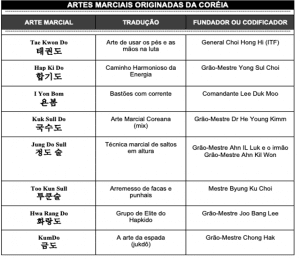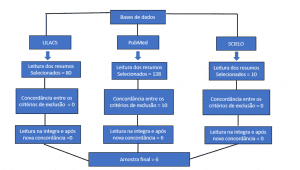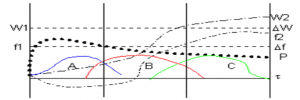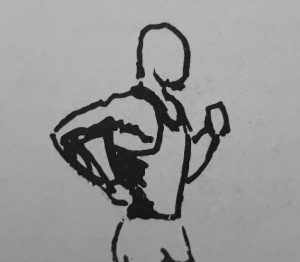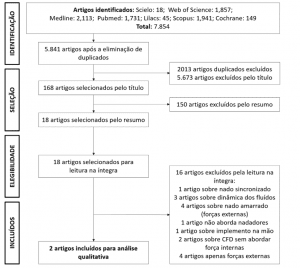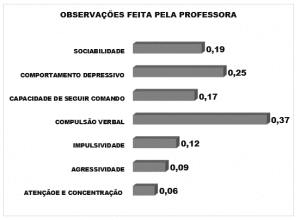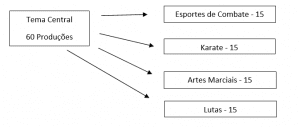ORIGINAL ARTICLE
CARDOSO, Vinícius Felipe [1]
CARDOSO, Vinícius Felipe. Associated factors between body mass index and physical fitness in adolescents between 11 and 14 years old in Birigui/SP. Revista Científica Multidisciplinar Núcleo do Conhecimento. Year. 07, Ed. 02, Vol. 05, p. 144-157. February 2022. ISSN: 2448-0959, Access link: https://www.nucleodoconhecimento.com.br/education-physics-en/body-mass
ABSTRACT
After the partial return of classes in State Schools in the State of São Paulo, it was visible to notice the increase in body weight in students and physical inactivity, measured in Physical Education classes in Birigui/SP. In view of the above, this article consists of a field research that discusses the following question: is the body weight that students acquired during quarantine correlated with their respective heartbeat? The general objective of this work was to verify a possible correlation between Body Mass Index (BMI) and the heart rate value obtained after a 50-meter running test. The methodology applied was quantitative, transversal and explanatory, in which the students were measured their height, body weight – for BMI – and their heart rate before and after the exercise. The research sample is built with 76 students from the 6th to the 8th grade (between 11 and 14 years old), corresponding to about 1.6% of the total number of students from Elementary School II in Birigui. Results: the characteristics of the composition of the Body Mass Index are related to the heart rate obtained at the end of the exercise, but with normal averages in this population, however, about 6.84% of the total of adolescents surveyed are unfit, or that is, there is no physical activity outside of school, only in the weekly Physical Education classes. Conclusion: it can be concluded that 5 out of 76 students are physically unfit in Birigui/SP.
Keywords: Back to school, Physical inactivity, Sedentary lifestyle.
INTRODUCTION
The current moment we are going through, caused by the new coronavirus, which was called Acute Respiratory Syndrome Coronavirus (Sars CoV-2), began in 2019 in China and was named coronavirus disease 2019 (Covid-19), in which affected the world population, killing hundreds of thousands of people. The quarantine period during the COVID-19 outbreak affected the quality of life, leading thousands of individuals to develop or increase mental disorders such as depression, anxiety and obesity. (CARIA et al., 2021)
It is visible to notice that people have gained body weight, and this not only happened in adults, but also in the elderly and, especially, in children and adolescents. According to Bizuti et al. (2021), the increase in children and adolescents who started to gain weight and increased body adiposity reached about 50%, that is, children and adolescents who went to school, had Physical Education classes, played ball in the break time, they had to abruptly change their routine: classes became online, remotely inside their homes and, successively, they ended up having more time sitting in front of the computer, cell phone, television, ingesting more industrialized foods causing the sedentary lifestyle and obesity of these students.
According to Laddu et al. (2020) individuals who have obesity, heart disease and diabetes are the people who are most at risk of having problems with COVID-19. Studies carried out by Popkin et al. (2021) show that an obese subject, when contaminated by COVID-19, can have a series of metabolic and immunological dysfunctions, with inflammation of the adipose tissue being potentiated. Mandatory, these conditions create lung dysfunctions with the risk of other comorbidities, such as: risk of getting hypertension, type II diabetes and hyperlipidemia.
In aspects related to health, great emphasis has been given, among the components of physical fitness, to cardiorespiratory fitness (CRF), since high levels of CRF indicators can reduce the risk of mortality caused by cardiovascular diseases, which are frequent in the adult population. (GUEDES and BARBANTI, 1995)
Corroborating this, Mohamed and Alawna (2020), say that aerobic training improves the overall immunity of the individual, increasing the immunity of the respiratory system (which is the gateway of Sars CoV-2). In other words, by doing exercise, there is a decrease in the inflammatory response through the decrease of C-Reactive Protein, triggering in the protection of the decrease in lung function, resulting in the prevention and decrease of the progression of the effects of COVID-19 in the respiratory system.
In the case of children and adolescents, a possible positive relationship can also be verified, since high values in cardiorespiratory indicators tend to reduce risk factors for cardiovascular diseases, such as obesity, high blood pressure, resistance insulin, among others. (BOELHOUWER and BORGES, 2008)
Little movement of people is visible in areas, venues and sports and leisure centers in Birigui, State of São Paulo, due to the lack of motivation of the Municipal Government, comprehensive policies and the dissemination of information about why to practice physical activity and its benefits.
Due to the time without the practice of Physical Education by students remotely, it can be seen that the problem of sedentary lifestyle and physical inactivity has worsened, according to data observed after the partial return of students to Birigui in the second semester of 2021. Issues such as: hypercaloric eating habits, abusive time watching television, or electronic games, are indicators of the short time of the “body in motion”.
The relevance of this study is justified in analyzing and understanding the problem of physical inactivity present in students, since the increase in body weight is visible in them and the lack of motivation, willingness and willingness to practice physical activity during the pandemic moment, knowing that the hypokinetic diseases, a sedentary lifestyle and health problems are acquired by the lack of comprehensive actions.
We can measure that in the area of Physical Education, numerous studies seek to identify the level of “physical fitness among young people and adolescents in an attempt to maintain and promote health through physical activity” (MOTA et al., 2002), knowing that “technologies permeate modern life, this fact highly contributes” (GUEDES and GUEDES, 1995). There is, therefore, the isolation of essential factors for young people of school age: physical fitness, mainly related to a sedentary lifestyle, idle time and access to available places for physical exercise/sports/leisure.
The identification of these attributes can contribute both to the maintenance and improvement of fitness and quality of life. This is reflected in the fact that those who are more physically active seem to have better relationships with their peers, are less prone to illness, deal better with psychological pressure in relation to the environment in which they live, among other “indicatives of good health and quality of life influenced by physical activity”. (GONÇALVES et al., 2007)
In view of the above, this article has as its guiding question: does the body weight that students acquired during quarantine correlate with their respective heartbeat? The general objective of this article is to verify possible correlation between Body Mass Index (BMI) and heart rate value obtained after 50 meters race, in which the specific objective is: to analyze possible physically unfit.
PROCEDURES AND METHODOLOGY
KIND OF STUDY
The research was carried out with a quantitative, transversal, explanatory bias, also known as nomothetics, which, according to Gaya (2008, p. 54), corresponds to scientific disciplines that have an objective view of reality, identifying with the world of natural and external phenomena to the subject of knowledge. It is characterized as a case study, according to Gil (2002, p. 42), as it sharply encompasses one or a few objects, aiming at the detail, explanation and robustness of the observed subject.
To carry out this study, articles were collected about health-related physical activity during the COVID-19 pandemic. Among them, we can mention Caria et al. (2021), Laddu et al. (2020), Mohamed and Alawna (2020), Popkin et al. (2021) and Silveira et al. (2021), highlighting the object of “back to school in the State of São Paulo, in Birigui”.
POPULATION AND SAMPLE
The study was carried out with a sample of 76 students (49 boys and 27 girls) from the 6th to the 8th grade (between 11 and 14 years old) from the public school system in the city of Birigui, State of São Paulo, which corresponds to about 1.6% of total Elementary School II students.
INSTRUMENTS AND PROCEDURES
Before the beginning of the tests, the students were invited for the first data collection, initially informed of how the test would proceed; then they read and signed the Consciously Free and Informed Term, according to Resolution No. 466, of December 12, 2012, referring to the ethics committee in the health area.
The 50-meter running test took place on an indoor court, with non-slip flooring. The subjects were instructed to move from one end to the other, so that their path forms an “X”, in just one execution. At the end, heart rate was measured in Beats Per Minute (BPM) with the aid of the G-TECH Digital Led Oximeter. The measured HRmax was predicted by Tanaka et al. (2001).
All data were organized in Microsoft Excel ® 2021 spreadsheets and the non-parametric Kruskal-Wallis test (p<0.05) was used to verify differences between the results, the Mann-Whitney test (p<0.05) to identify the normality of the data distribution of the independent samples and the “t test”, both tests of the Bioestat 5.3 ® software.
RESULTS AND DISCUSSION
Weight and height data were collected in order to estimate the Body Mass Index (BMI) of these students between 11 and 14 years old. The table below shows the correlation between the body mass index of boys and girls, through the independent statistical analysis of Mann-Whitney.
Table 1 – Statistics between Boys and Girls Body Mass Index (Mann-Whitney)
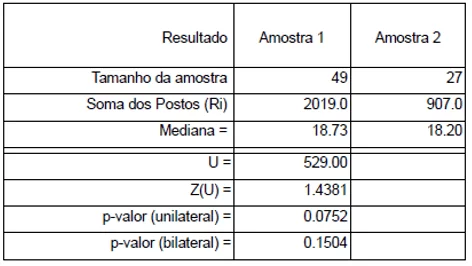
We can see that there is not much difference between the results obtained, where the median ranges, in boys, with a BMI of 18.73 – close to ± 19, and in girls 18.20 – close to 18.5. It is known that, according to the BMI table for this age group, many students are in the normal and normal range (≥ z-score – 2 and ≤ z-score – 1)
In order to answer the guiding question, data from boys and girls were divided in order to compare the Beats Per Minute (BPM) before physical exercise and after exercise, in order to correlate their respective maximum estimated values. This comparison, in the form of a visual graph, is found immediately below.
Graph 1 – Comparison between initial, final and estimated BPM in boys
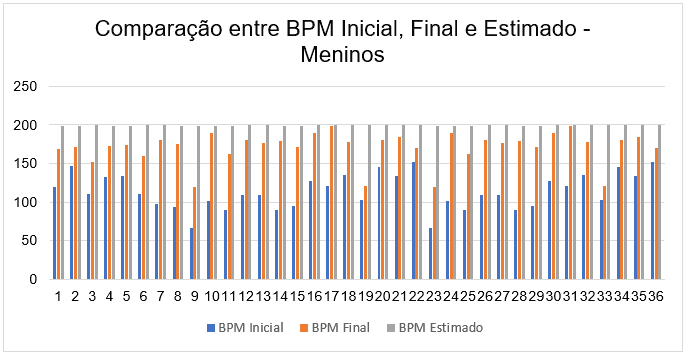
Among the values obtained, it is visually possible to identify that many of the students used about 80% to 91.4% of their maximum heart rate. This explains the difficulty level of the exercise for some; more regularly among sedentary and obese students, corroborating Filgueira et al. (2021), which relates the relevance of physical activity and physical fitness in groups that contracted COVID-19. That is, these students had a stimulus to capture the potentiated oxygen, to meet the needs of the exercise, as we can see the numbers 10, 17, 24 and 31 in graph 1.
In the same way, it is possible to identify students with a certain periodicity of physical activity practice, from the smaller variance between the “initial BPM” and “Final BPM” (PEREZ, 2005) as we can see in table 2 below, where there was a predominance of of submaximal efforts (between 70 and 84% of HRmax).
Table 2 – Independent samples of the Estimated Initial BPM in boys (t test)
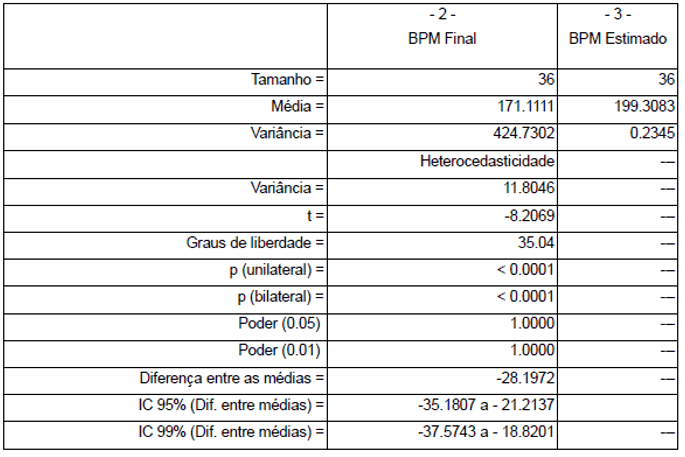
Likewise, measured with boys, it was possible to have a considerable sample with girls, since not all of them adhered to the practice of the exercise. Just below, the graph will show us the comparison between the Start, End BPM (after exercise) and the estimate of the maximum heart rate in girls between 11 and 14 years old.
Graph 2 – Comparison between initial, final and estimated BPM in girls
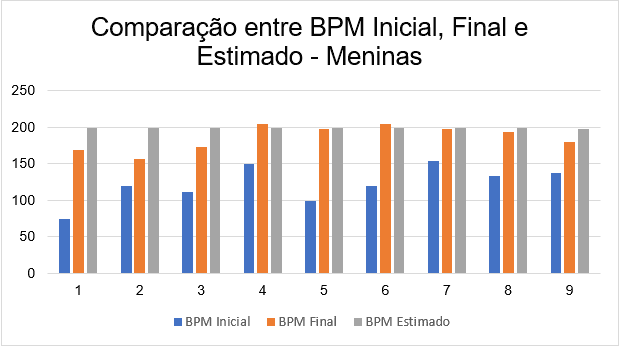
We can see that many (6) reached close to 98.9% of their Max BPM, while only 3 remained on average. This explains studies such as Hallal et al. (2006), who report that girls between 10 and 12 years old are more idle due to the lack of motivation on the part of the social environment (family, school, community) for physical practice, sports or physical activity of common interest, and the exacerbated use of the cell phone during classes and everyday life. On the other hand, there was a smaller variation compared to data obtained from boys of the same age group. Below is the mean between independent samples with “t test” in girls.
Table 3 – Independent Samples of Estimated Initial BPM in girls. (t test)
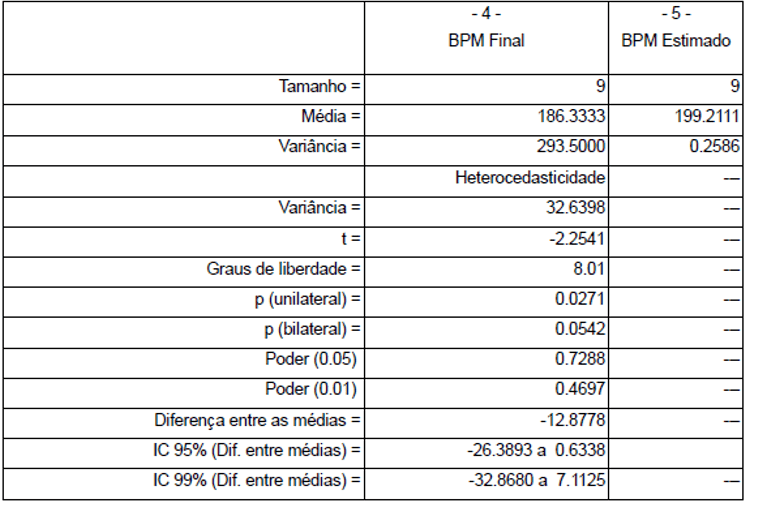
Finally, it is necessary to understand the variances between the ages and the weights obtained. We can see in graph 3 that the average between them is 50 kg (red line, x axis) – standard error > 9.98 and <9.98. It is inferred that very few students exceed the estimated limit value (10) and lower values (9).
Graph 3 – Age and weight sample
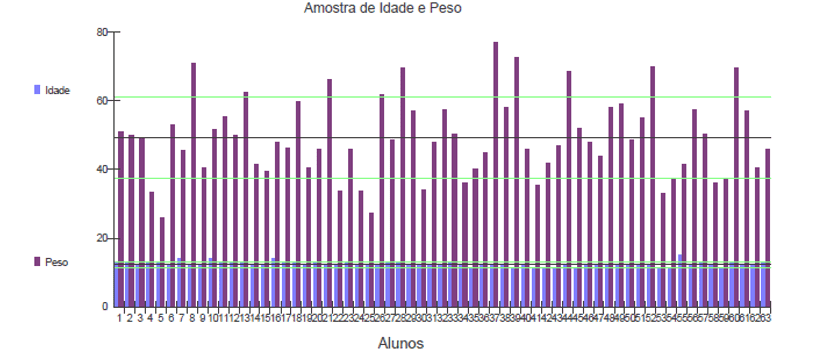
Concreting the guiding question of this research, the correlation between heart beats after exercise and their respective Body Mass Index was raised. It is necessary to state that there was exclusion of students, and 40 students were not satisfied with the results of the aforementioned BMI and decided, on their own, not to continue with the tests. Therefore, the table below refers to a small sample (33) of the total group surveyed (76).
Table 4 – Heart Rate Correlation Test and Body Mass Index – Pearson’s Correlation Coefficient
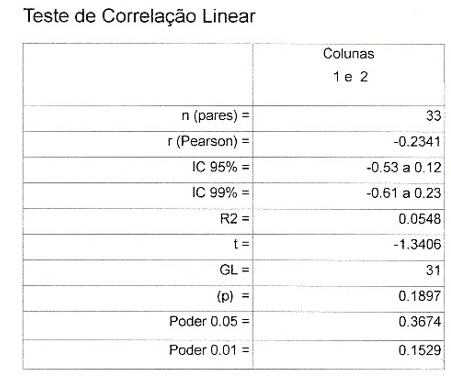
Considering the target audience of this article, it is clear that it is diverse, being the same applied in healthy adolescents and even with some physical dysfunctions in the BMI calculation. However, we can understand that there was a correlation between BMI and heart rate measured after the proposed test.
CONCLUSION
According to the results and discussions presented in this work, it can be concluded that the characteristics of the composition of the Body Mass Index (BMI) are related to the heart rate obtained at the end of the exercise performance, although presenting normal means in this population.
It can be concluded that about 6.84% of the total of adolescents between 11 and 14 years old in this school unit in Birigui are unfit, that is, they do not have physical activity outside school, only in the weekly Physical Education classes, leaving open the hypothesis of the irrational use of video games and games on the smartphone, which can be performed individually or in small groups, for example.
Answering the guiding question, it is possible to identify that some students have no correlation with body weight and their respective heart rate, although the research finds students with physical inactivity, leaving aside possible factors associated with cardiovascular diseases and childhood obesity.
Likewise, the research is limited to 76 individuals and must be interpreted with caution for other audiences, therefore, the level of physical effort and intensity was not controlled, leaving the volunteers free to avoid bruising during the execution.
REFERENCES
BOELHOUWER, ; BORGES, A. Aptidão física relacionada à saúde de escolares de 11 a 14 anos de Marechal Cândido Rondon – PR. Caderno de Educação Física e Esporte, Marechal Cândido Rondon, v. 4, n. 7, p. 19-30, 2008. Disponivel em: <https://e-revista.unioeste.br/index.php/cadernoedfisica/article/view/1332>. Acesso em: 2 out. 2021.
CARIA, A. C. I. et al. Physical exercise effects on the brain during COVID-19 pandemic: links between mental and cardiovascular health. Fondazione Società Italiana di Neurologia, 2021. Acesso em: 06 out. 2021.
FILGUEIRA, T. O. et al. The Relevance of a Physical Active Lifestyle and Physical Fitness on Immune Defense: Mitigating Disease Burden, With Focus on COVID-19 Consequences. Front. Immunol., n. 12, fev 2021. Disponivel em: <https://doi.org/10.3389/fimmu.2021.587146>. Acesso em: 18 jan 2022.
GAYA, A.; GARLIPP, D. Ciências do movimento humano: introdução à metodologia da pesquisa. Porto Alegre: Artmed, 2008.
GIL, A. C. Como Elaborar Projetos de Pesquisa. 4ª. ed. São Paulo: Atlas, 2002.
GONÇALVES, H. et al. Fatores socioculturais e nível de atividade física no início da adolescência. Revista Panamericana de Salud Pública, n. 22, p. 246-253, 2007. Disponivel em: <https://www.scielosp.org/article/rpsp/2007.v22n4/246-253/>. Acesso em: 02 out. 2021.
GUEDES, D. P.; BARBANTI, V. J. Desempenho motor em crianças e adolescentes. Revista Paulista de Educação Física, São Paulo, v. 9, n. 1, p. 37-50, 1995. Disponivel em: <https://www.revistas.usp.br/rpef/article/view/139415>. Acesso em: 10 out. 2021.
GUEDES, D. P.; GUEDES, J. E. R. P. Exercício físico na promoção da saúde. Londrina: Midiograf, 1995.
HALLAL, P. C. et al. Prevalência de sedentarismo e fatores associados em adolescentes de 10-12 anos de idade. Cadernos de Saúde Pública, Rio de Janeiro, p. 1277-1287, 2006. Disponivel em: <https://doi.org/10.1590/S0102-311X2006000600017>. Acesso em: 22 nov 2021.
HUGHES, L. et al. Blood flow restriction training in clinical musculoskeletal rehabilitation: a systematic review and meta-analysis. British Journal of Sports Medicine, n. 51, 2017. Disponivel em: <https://pubmed.ncbi.nlm.nih.gov/28259850/>. Acesso em: 11 set 2021.
LADDU, D. R. et al. Physical activity for immunity protection: Inoculating populations with healthy living medicine in preparation for the next pandemic. Progress in Cardiovascular Diseases, v. 64, p. 102-104, 2020. Disponivel em: <https://www.sciencedirect.com/science/article/pii/S0033062020300785>. Acesso em: 18 jan 2022.
MOHAMED, A. A.; ALAWNA, M. Role of increasing the aerobic capacity on improving the function of immune and respiratory systems in patients with coronavirus (COVID-19): A review. Diabetes Metab Syndr, n. 4, p. 489–496, ago 2020. Disponivel em: <https://www.ncbi.nlm.nih.gov/pmc/articles/PMC7186129/>. Acesso em: 18 jan 2022.
MOTA, J. et al. Níveis e padrão de actividade física quotidiana em crianças obesas sujeitas a um programa de treino. Endocri. Metab. Nutr., v. 10, n. 2, p. 01-09, 2002.
PEREZ, J. La Frequência Cardíaca em partido. Revista Abfutbol, Espanha, p. 75-79, 2005.
POPKIN, B. M. et al. Individuals with obesity and COVID-19: A global perspective on the epidemiology and biological relationships. Obes Rev., 2021. Disponivel em: <https://pubmed.ncbi.nlm.nih.gov/32845580/>. Acesso em: 18 jan 2022.
SILVEIRA, M. P. et al. Physical exercise as a tool to help the immune system against COVID‑19: an integrative review of the current literature. Clinical and Experimental Medicine, p. 15–28, 2021. Disponivel em: <https://doi.org/10.1007/s10238-020-00650-3>. Acesso em: 01 out. 2021.
TANAKA, ; MONAHAN , D.; SEALS , D. R. Age-predicted maximal heart rate revisited. Journal of the American College of Cardiology, v. 37, n. 1, p. 153-156, 2001. Disponivel em: <https://www.sciencedirect.com/science/article/pii/S0735109700010548>. Acesso em: 04 out. 2021.
[1] Postgraduate in Environmental Education and Sustainability from UniCesumar; postgraduate in Exercise Physiology from FAVENI and specialist in Environmental Management from UniCesumar. Degree in Licentiate in Physical Education by FABI. ORCID: 0000-0001-7884-2695.
Submitted: January, 2022.
Approved: February, 2022.

